Want to Try Growing Orchids? Give These Varieties a Look

The orchid family (Orchidaceae) is oldest and largest flowering plant family on earth with about 28,000 species!
They come in every color, size, and shape imaginable and are typically not more difficult to grow than some of the other flowering houseplants you love, such as cyclamen, Thanksgiving cactus or African violets.
Orchids grow on every continent except Antarctica. Their flowers are highly evolved and incredibly showy with blooms that lasts weeks to months. Orchids are divided into two categories: epiphytic, which anchor themselves to other plants and terrestrial orchids, which grow in the ground on top of a layer of moss.
General Orchid Care
Most orchids need bright, indirect light—not direct sunlight. That's because they usually grow in protected nooks and crannies of tree limbs or on the floor of the forest, where they receive some shade. Light from bright east, west or south-facing windows will help them thrive. You can also invest in an LED grow light if you live in a cloudy area. (Here are a few we recommend.)
Orchids also prefer warm temperatures (72°F to 80°F) during the day and slightly cooler at night in order to form flowers.
Most also need higher humidity levels. You can group your orchids together as well as around other houseplants (which transpire and release water vapor) to create a more humid space. You also can run a small humidifier if your home is particularly dry. Unfortunately, misting doesn't work to increase humidity levels around plants. The water won't stay in the air long enough.
When watering your orchids, don't keep them soggy. Give your plant a good drink, then don't water again until it feels dry when you poke your finger into the planting medium. If it's still wet, wait to water, rechecking in another day. For mounted orchids on bark or cork, soak the entire base for 15 minutes only when it feels dry.
More Great Houseplant Ideas at Country Living:
Phalaenopsis Orchid
One of the most common types of orchids, phalaenopsis orchids, also known as "moth orchids," are ideal for beginners. They are relatively easy to grow inside and stay in bloom for most of the year. Phalaenopsis orchids prefer diffused lighting and moderate humidity, so try placing yours in the kitchen or bathroom.
Care Guide
Light: Shaded, indirect light, east or west-facing windows
Water: When soil becomes slightly damp, up to 2 times per week during dry periods
Temperature: 70 to 80°F during the day, 60 to 65°F at night
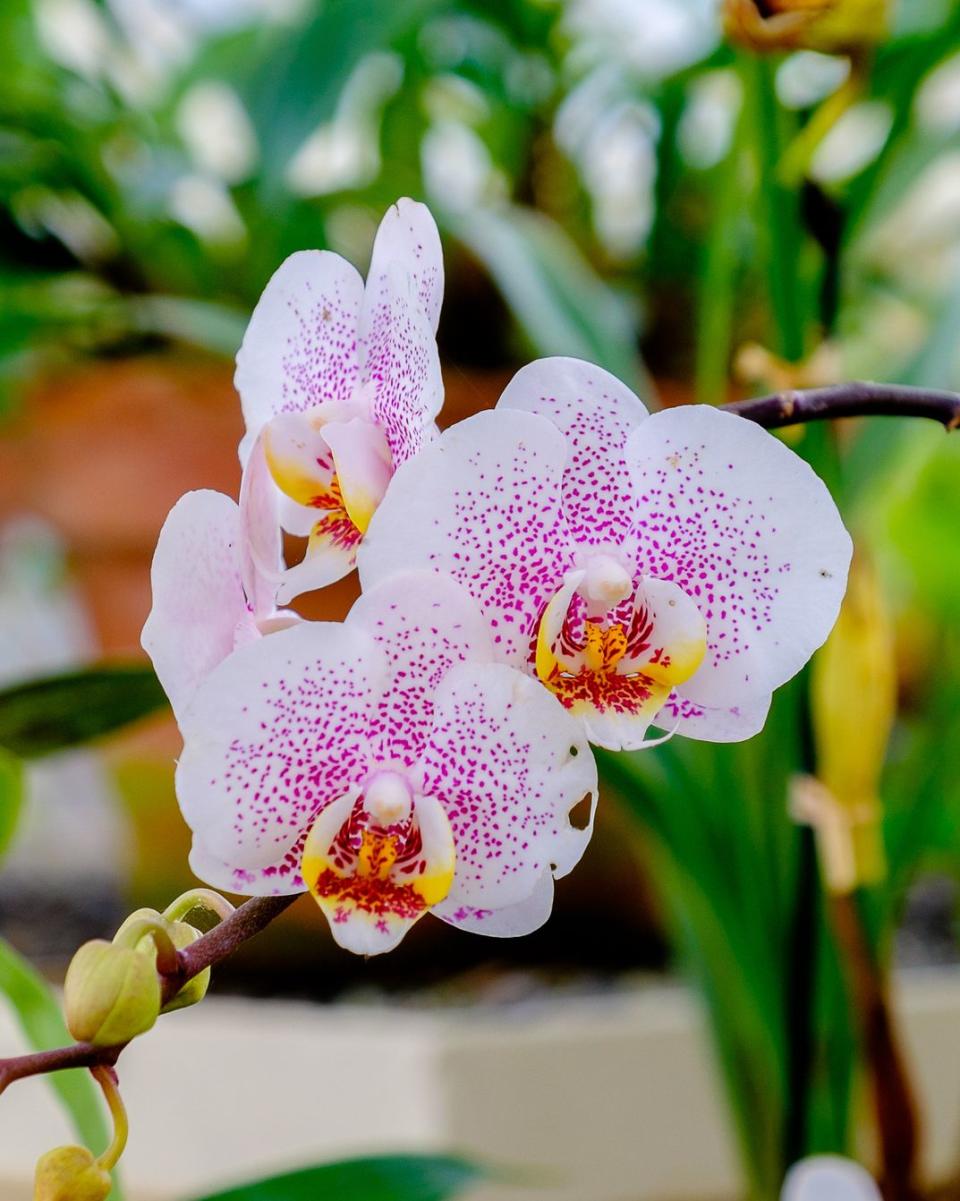
Cattleya Orchid
As one of the most popular orchids, cattleya orchids, also known as "corsage orchids," come in a variety of different colors due to hybridization. Many have freckles or streaks of contrasting colors, and they thrive best in warm climates with medium bright light.
Care Guide
Light: Abundant bright but indirect light, east-facing window
Water: About once a week, when the soil feels very dry
Temperature: 70 to 80°F during the day, 60 to 65°F at night
Read more: How to Care for Aglaonema, A Colorful Easy-Care Houseplant
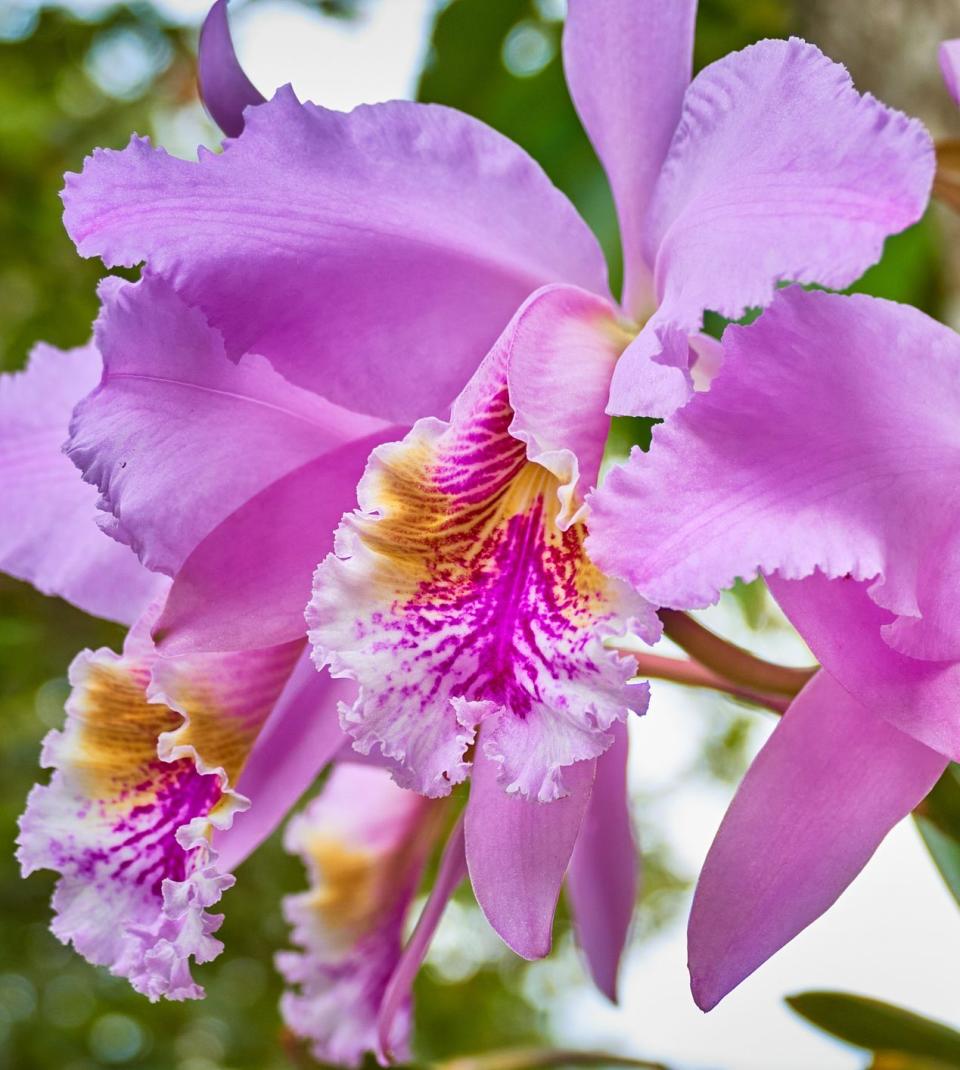
Psychopsis Orchid
Psychopsis orchids are also known as "butterfly orchids" because their speckled petals look like butterflies dancing in the breeze. They are relatively easy to grow as they have a good tolerance for a wide range of temperature and light conditions and can bloom for many months.
Care Guide
Light: Low to moderate light. East or west-facing windows
Water: Fully moisten when watering, allow to nearly dry out between. Humidity as much as 85%
Temperature: Up to 90°F during the day, to 60°F at night
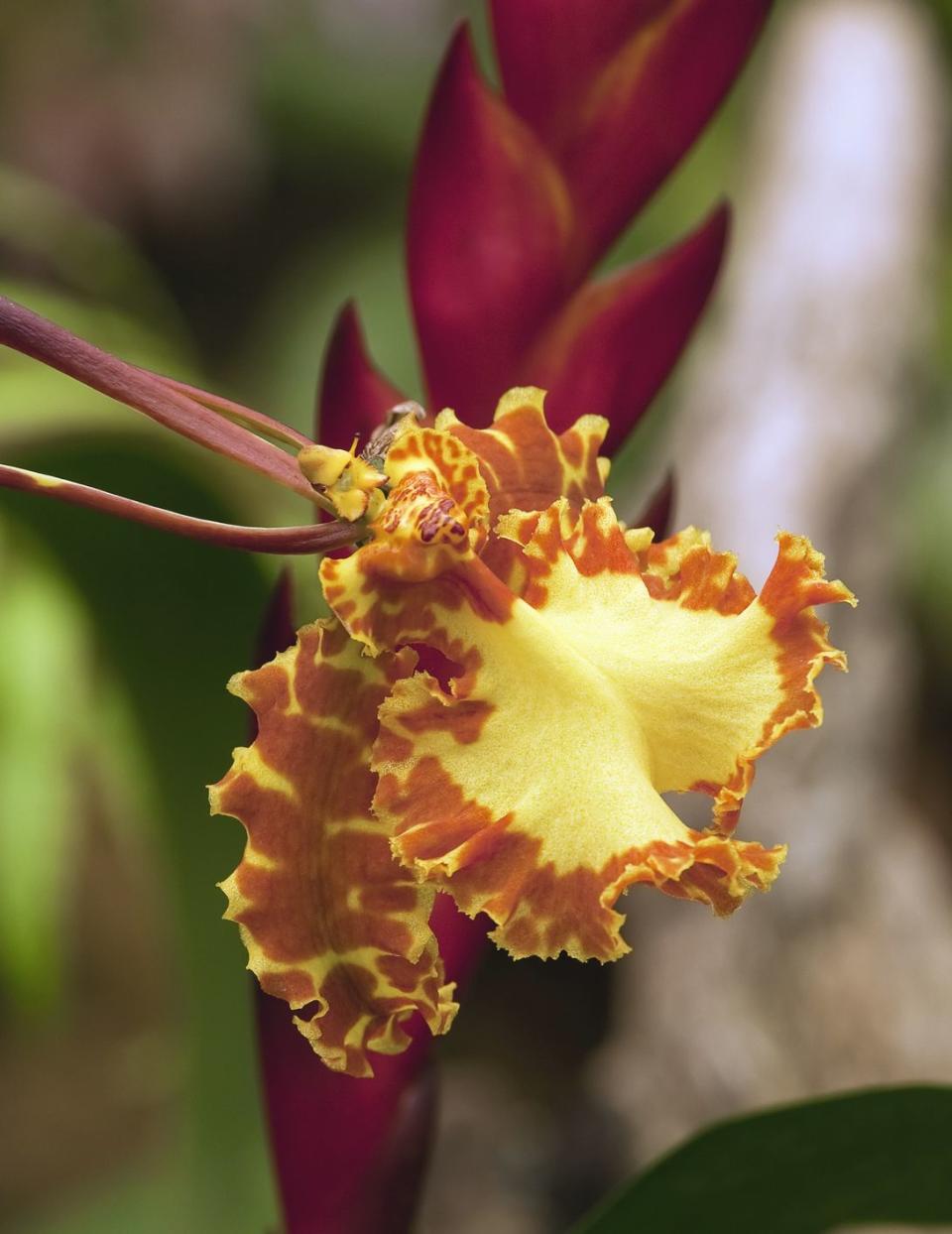
Dendrobium Orchid
There are as many as 1,800 different species of dendrobium orchids. These orchids like to grow in small pots and often have tall, top-heavy blooms that require staking for support. Dendrobium orchids require cooler temperatures and less humidity than other orchids.
Care Guide
Light: Bright, indirect morning light for 5-6 hours, east-facing windows
Water: Every few days from spring to fall, and during flowering, then once a week after that.
Temperature: 70 to 80°F during the day, 60 to 65°F at night
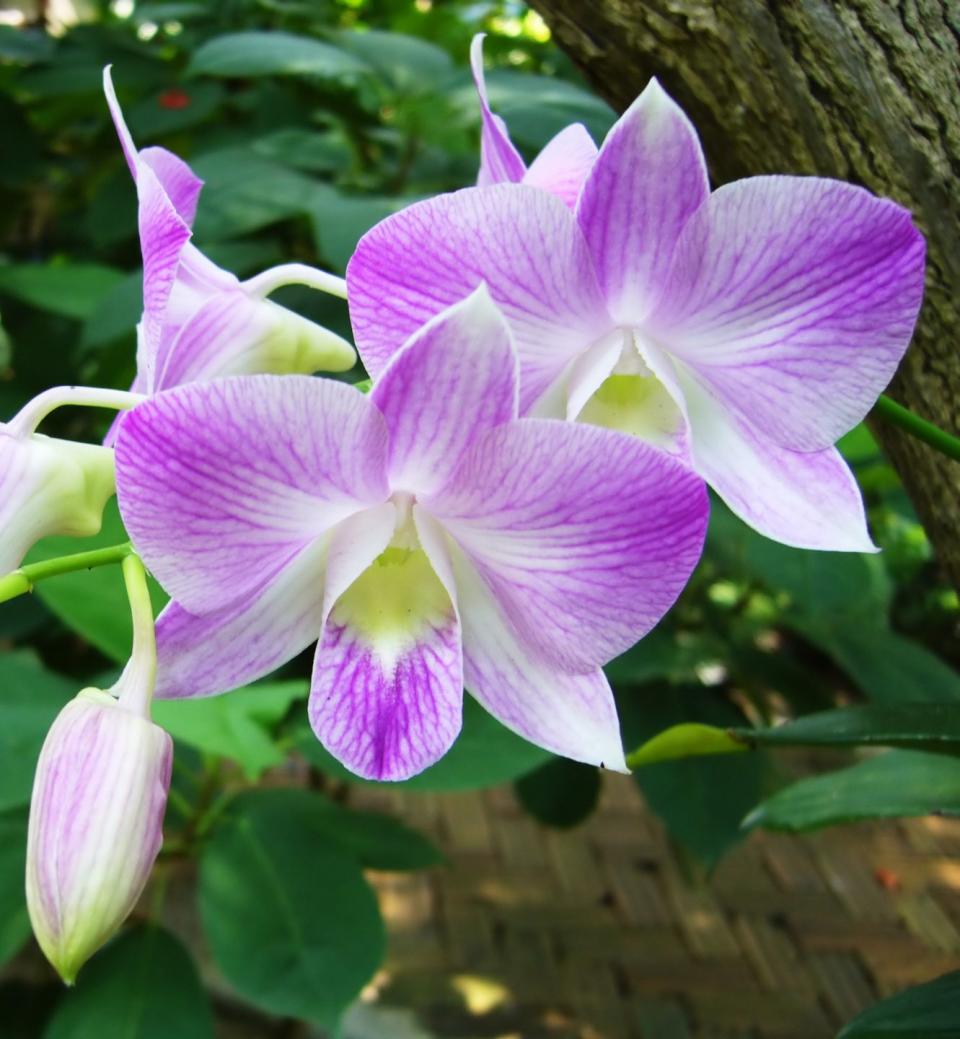
Cymbidium Orchid
Commonly known as "boat orchids," cymbidium orchids have smaller flowers compared to other orchid varieties, but can produce up to 30 blooms per spike. They can be grown in a garden or as an indoor houseplant and prefer warmer temperatures during the day and cooler temperatures at night.
Care Guide
Light: Bright but diffuse light, south, east, or west-facing windows
Water: Keep moist at all times. In the spring, water frequently and heavily
Temperature: Cymbidium do best outdoors, where fall temperatures drop below 60°F. Plants are not frost tolerant and will need to come indoors if temperatures reach 35°F or colder
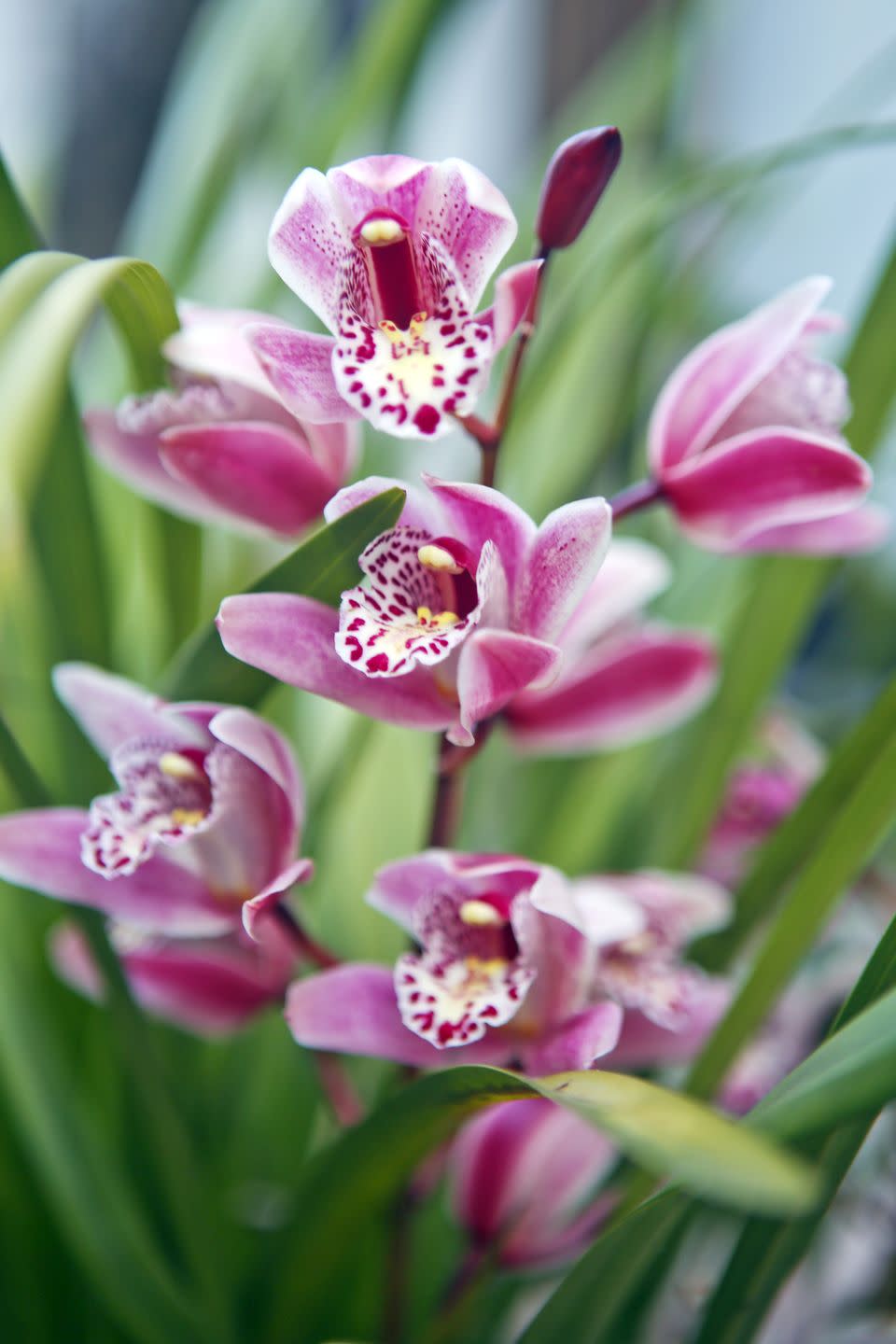
Bee Orchid
This adorable orchid gets its name because it looks as if a bee is feeding from the flower! Native to the United Kingdom, they aren't easy to find because they're so uncommon. But their diminutive size and charming habit make them highly prized.
Care Guide
Light: Bright indirect light, such as an east window
Water: About once every 10 days when it feels dry
Temperature: 70 to 80°F during the day, 60 to 65°F at night
Read more: 15 Things You Didn't Know about Orchids
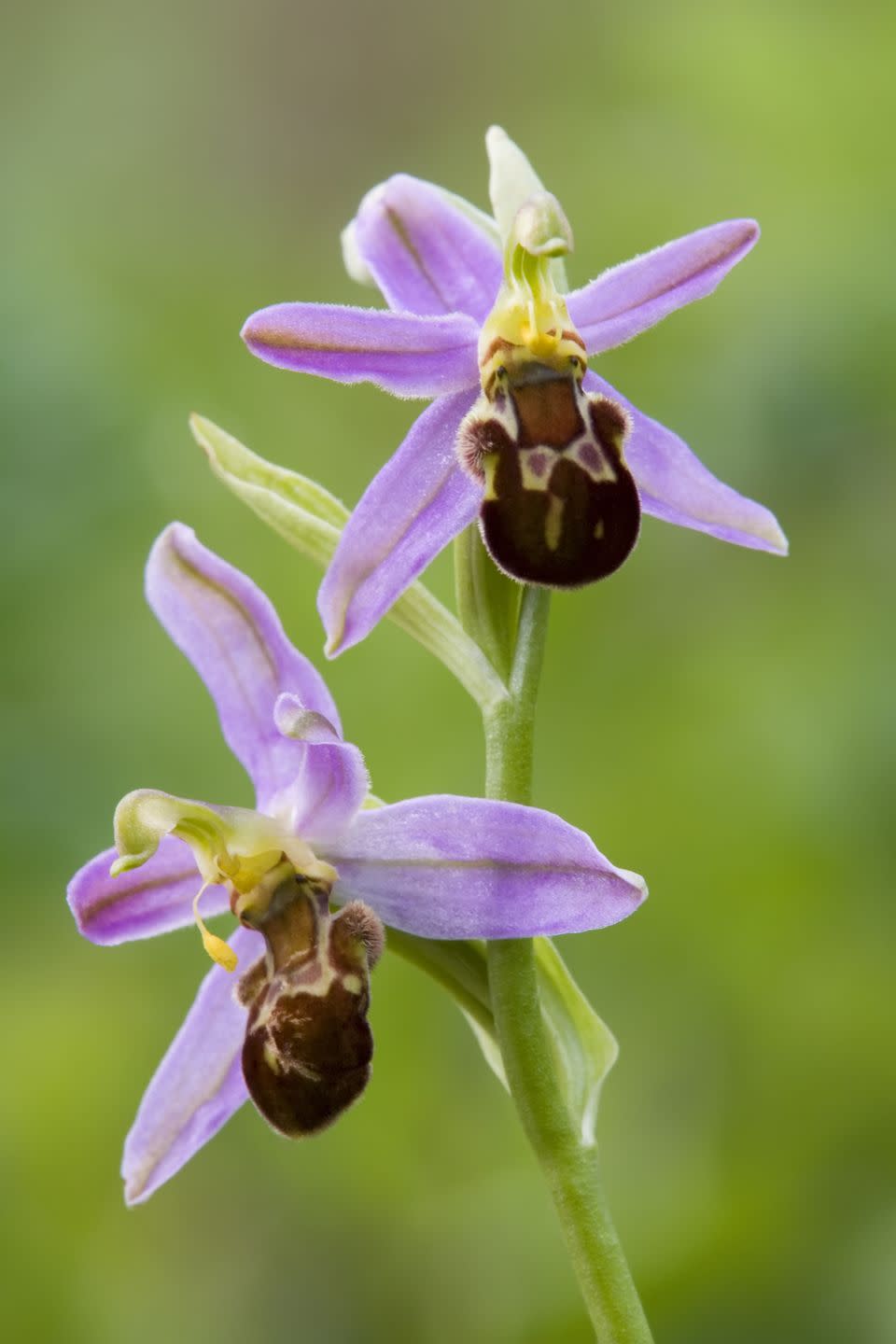
Fragrant Mini Orchid
The teeny, less than one-inch wide flowers of this orchid are so sweet! They resemble pansies. The entire plant, which is sometimes also known as the Taiwan mini orchid, is usually just a few inches tall. They're often mounted on a cork slab.
Care Guide
Light: Bright, indirect light
Water: Soak the entire slab once a week for 15 minutes
Temperature: 70 to 80 degrees day, 65 to 70 degrees night
Read more: How to Grow Orchids and Keep Them Blooming
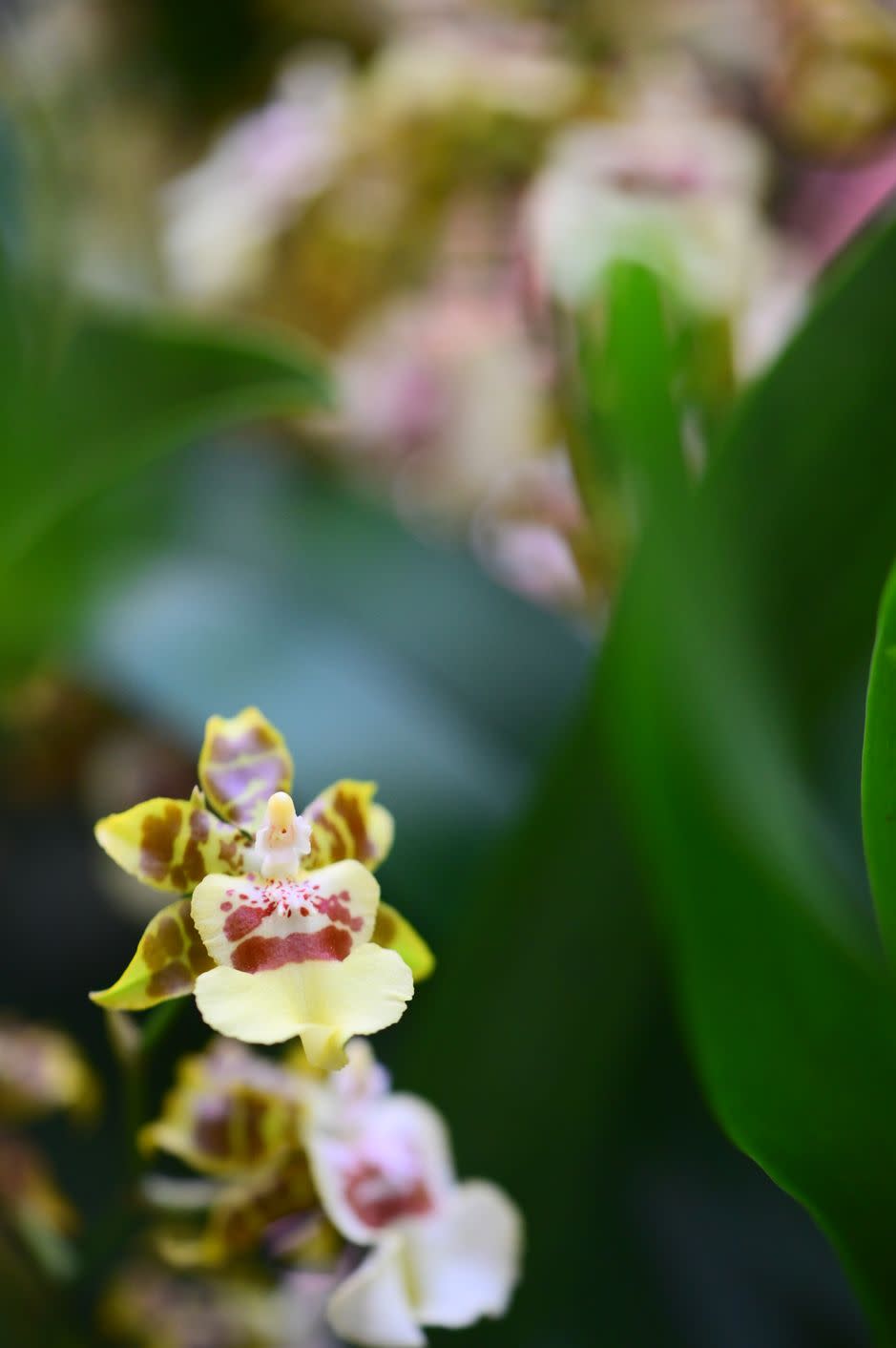
Ghost Orchid
Is there an orchid more intriguing than this one? The ghost orchid is a mini orchid native to Florida and Cuba. It's a wee bit fussy so it's not an orchid for beginners. It's often grown on a cork slab.
Care Guide
Light: Bright, indirect light
Water: Water every few days by soaking slab
Temperature: 70 to 85 degrees daytime, 6o to 70 night
Read more: 11 Best Types of Philodendrons
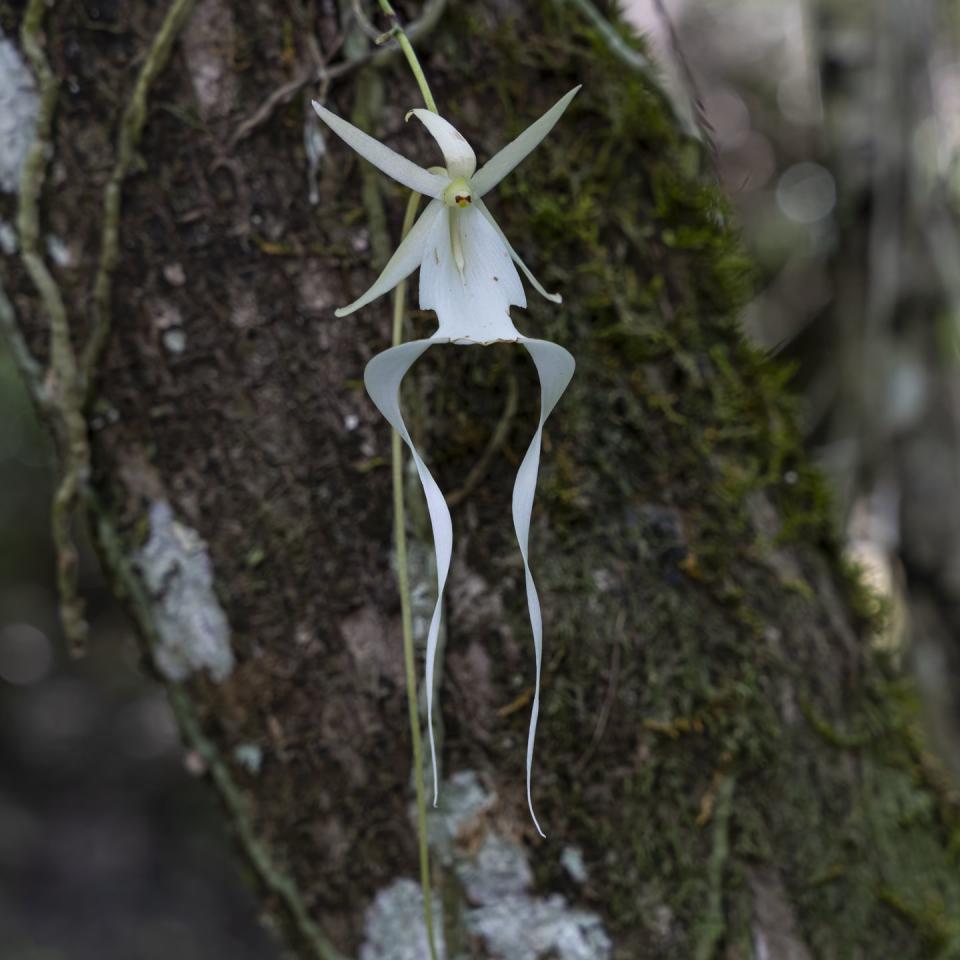
Brassia Orchid
Brassia orchids are distinguished by their spider-like sepals and interesting color patterns. These fragrant orchids boast numerous blooms with 8 to 12 flowers blooming from a single bulb. Brassia orchids love moisture and prefer bright, diffused light.
Care Guide
Light: Bright, indirect
Water: weekly, when the soil feels very dry
Temperature: Can tolerate cool temps but keep above 50°F
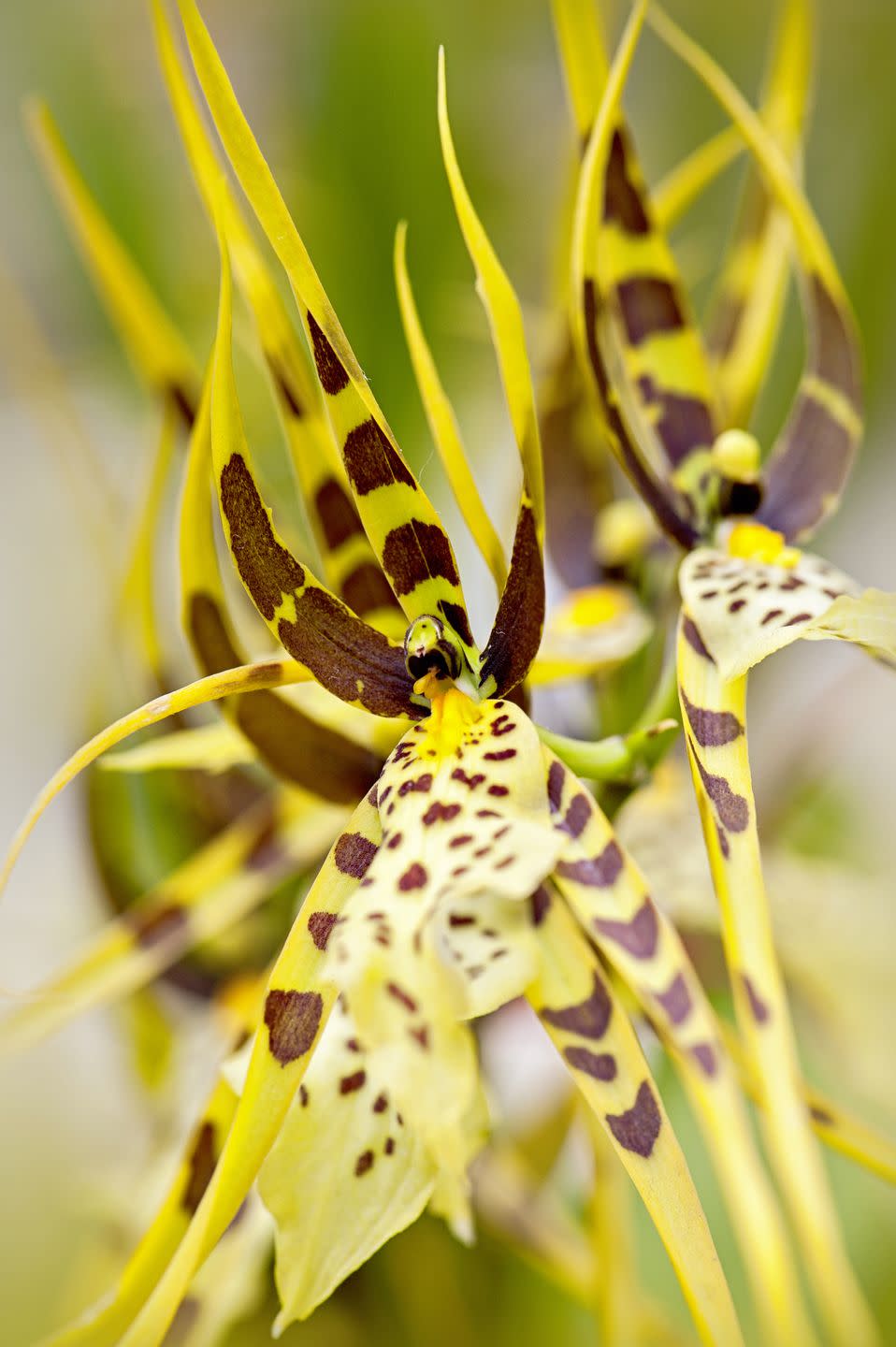
Vanda Orchid
With about 80 species in this genus, vanda orchids have endless color varieties and are known for their fragrant and long-lasting flowers. These orchids are often seen growing in hanging baskets with their roots exposed to plenty of air. Although they bloom 2 to 3 times a year, vanda orchids can be fickle to grow as they demand lots of light and high humidity.
Care Guide
Light: Bright or dappled light, south-facing windows
Water: Once every 5-7 days, as the soil begins to dry
Temperature: 70 to 80°F during the day, 60 to 65°F at night
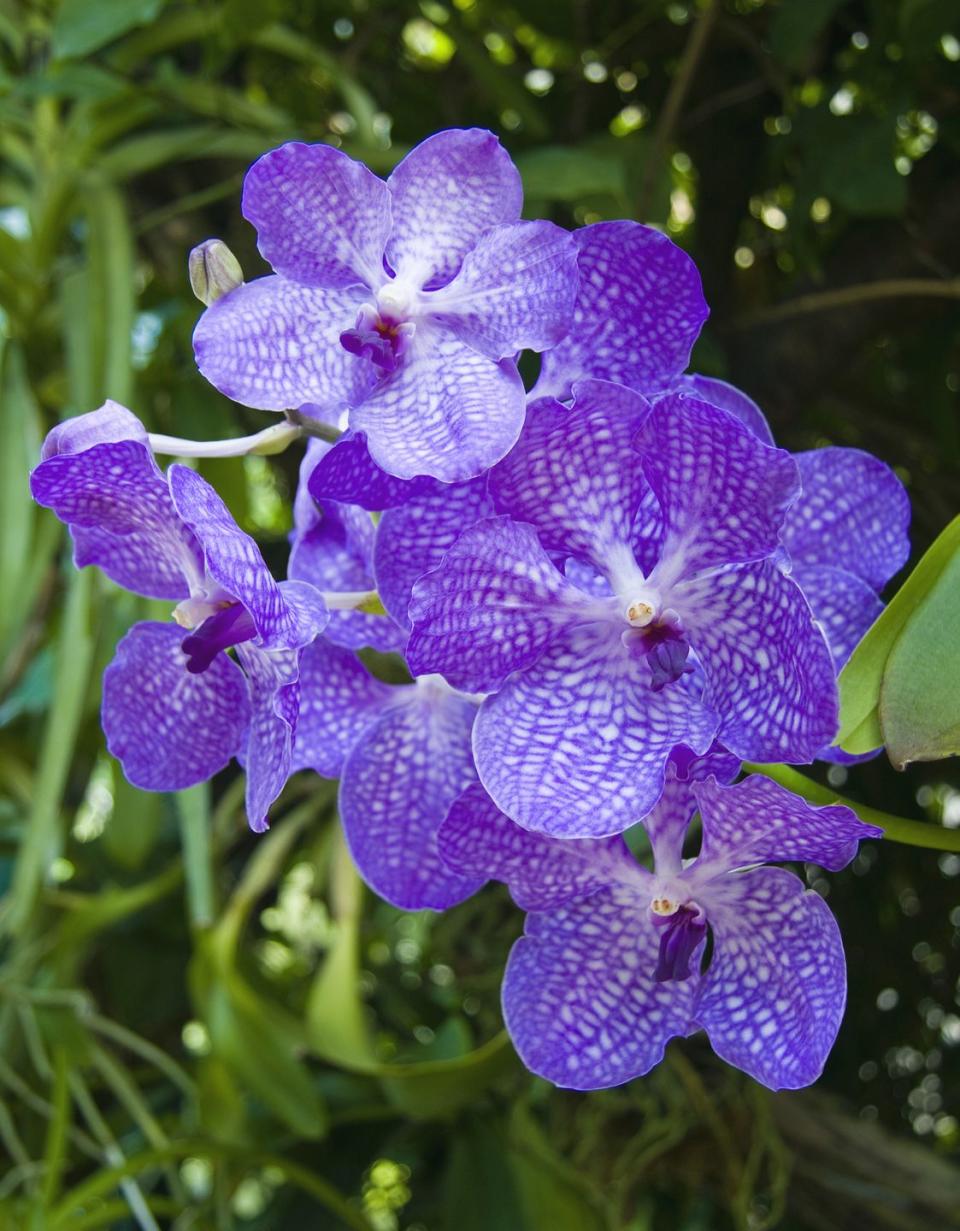
Maxillaria Orchid
Often found in tropical areas, maxillaria orchids like bright light and can take a lot of water. There are more than 300 species of maxillaria orchids and most are known for their fragrance of coconut and vanilla. Maxillaria orchids bloom in early spring.
Care Guide
Light: Abundant bright but indirect light, east-facing windows
Water: When soil feels dry to the bottom of the pot, about once a week at most
Temperature: 70 to 80°F during the day, 60 to 65°F at night
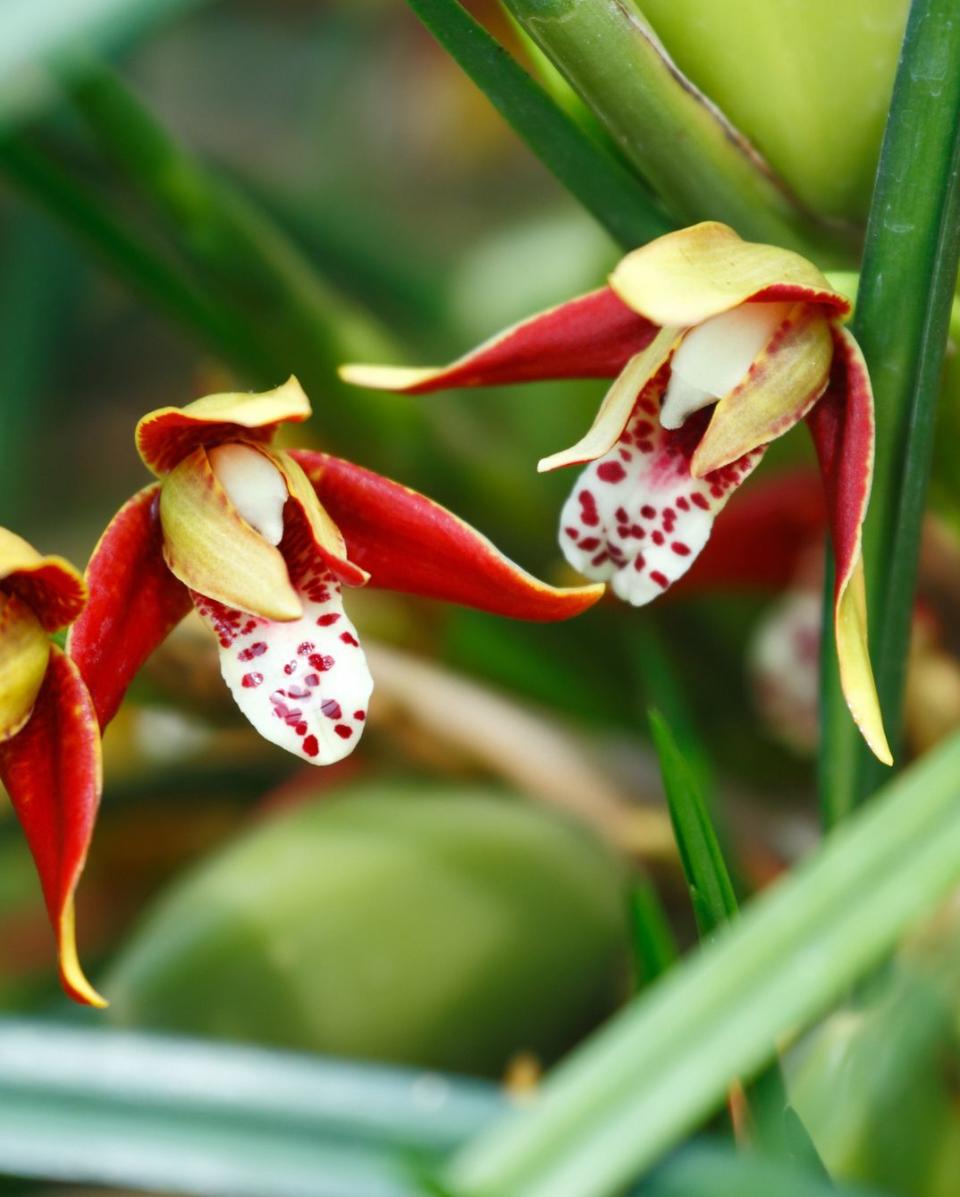
Miltonia Orchid
Miltonia orchids are often referred to as "pansy orchids" because of their similar appearance to garden pansies. Unlike garden pansies who prefer cooler temperatures, miltonia orchids require bright indirect light and moderate temperatures, blooming from late spring to summer.
Care Guide
Light: Abundant bright, partial sun
Water: Let soil almost dry all the way out between waterings
Temperature: 75 to 85°F during the day, 60 to 65°F at night
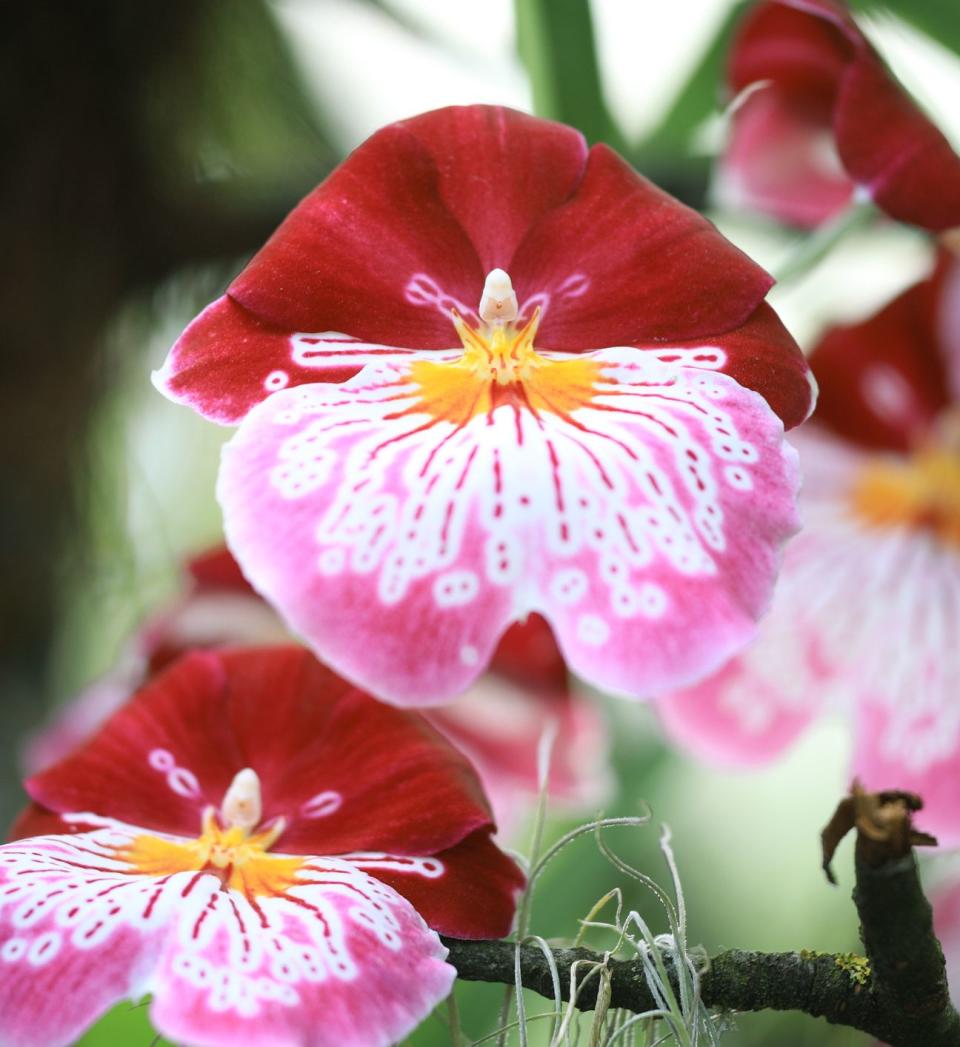
Zygopetalum Orchid
Zygopetalum orchids are another example of cool-climate orchids, blooming from fall to spring. These fragrant flowers boast bright purple petals with veiny streaks throughout. They make up a relatively small genus with only 15 species.
Care Guide
Light: Shaded, indirect light, east or west-facing windows
Water: Keep fairly moist, watering up to 2 to 3 times per week during warm, dry weather
Temperature: 70 to 75°F during the day, around 60°F at night
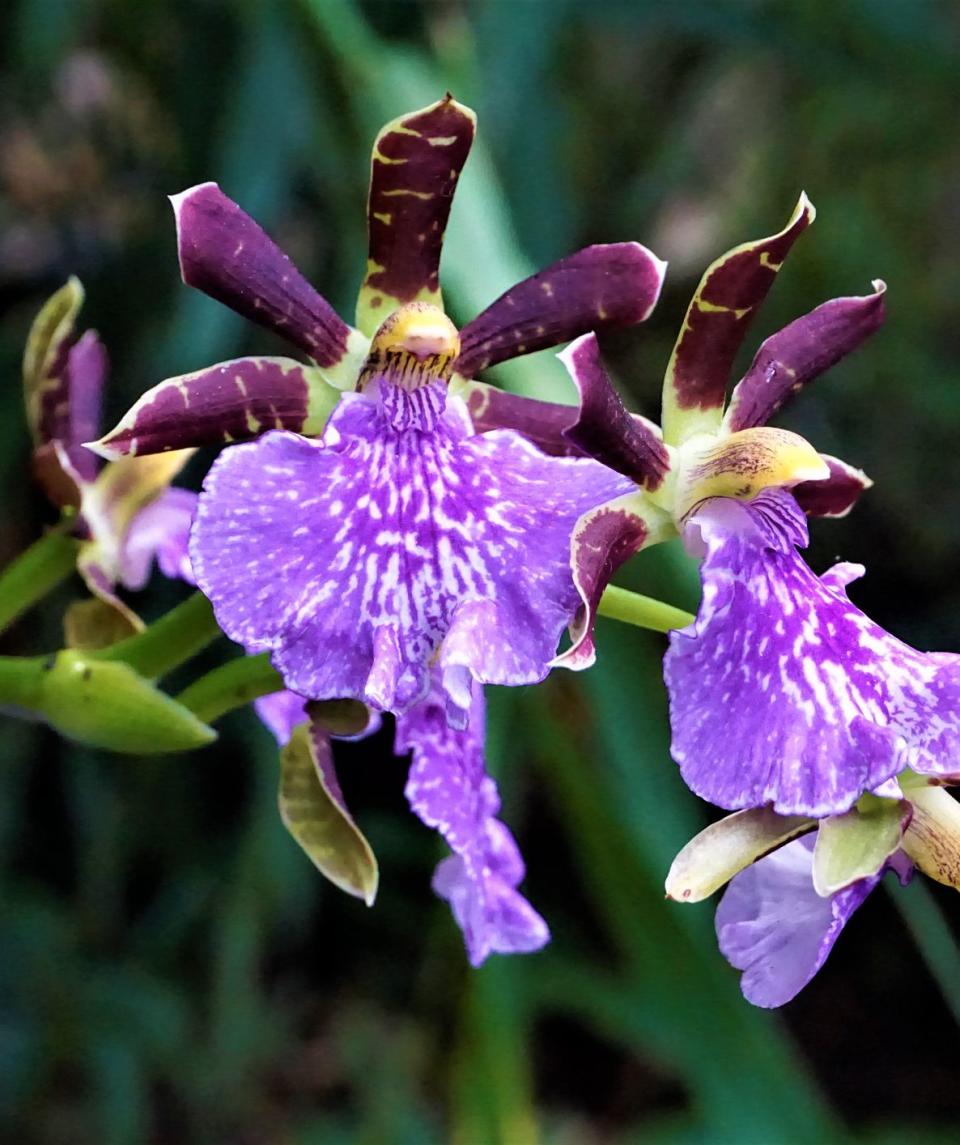
Brassavola Orchid
Nicknamed "lady of the night orchids," brassavola orchids have white and green flowers with narrow petals that release a fragrant scent in the evening. These orchids can be grown in a pot or on an orchid mount. They flower in early winter.
Care Guide
Light: Tolerates medium to high indirect light
Water: Keep well watered, but allow plenty of drainage. Brassavola does best in high humidity (40 to 7o%) environments
Temperature: 70 to 75°F during the day, 60 to 65°F at night
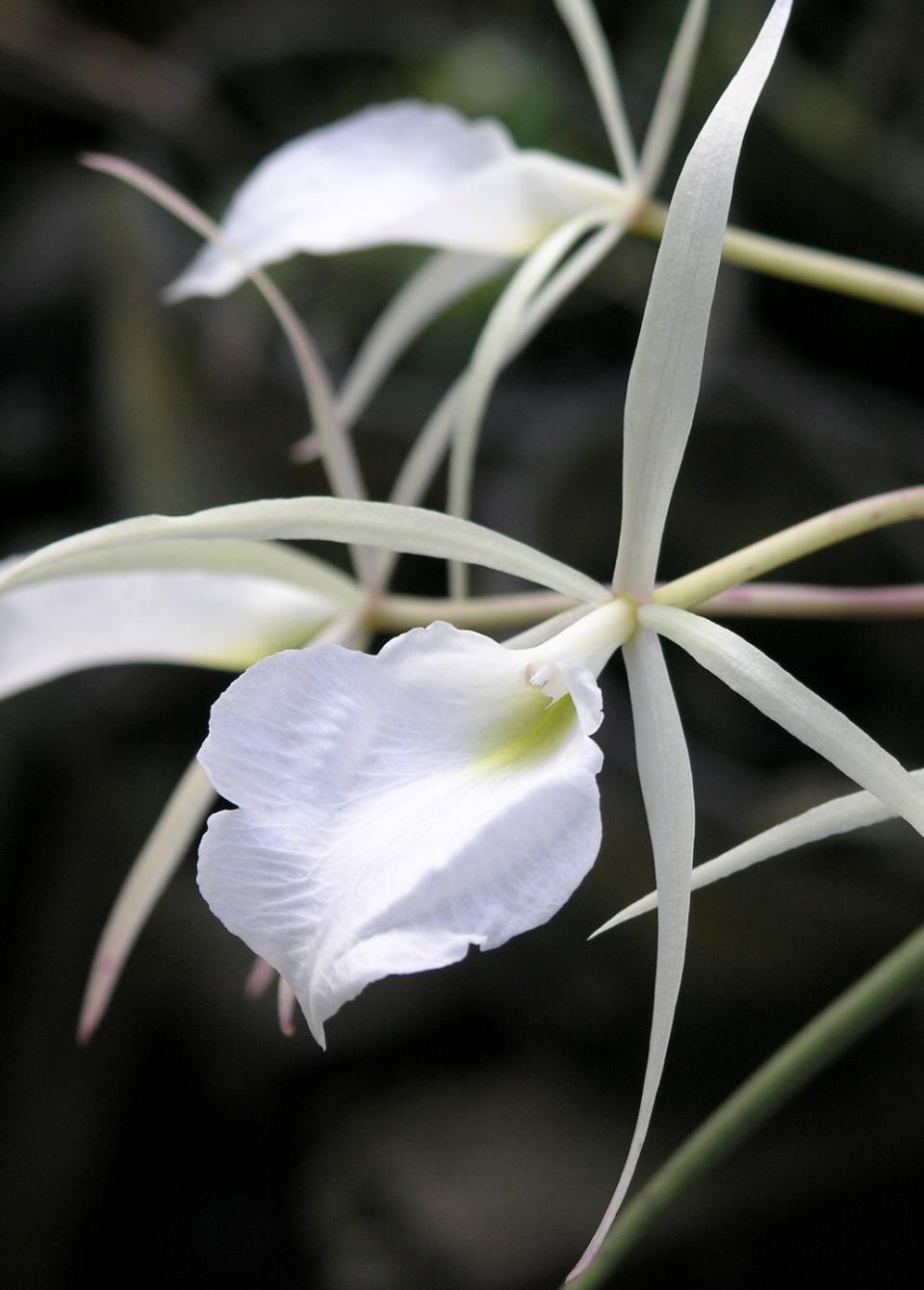
Encyclia Orchid
Also known as "cockleshell orchids," encyclia orchids are recognized for their octopus-like shape and ability to bloom for several consecutive months. These orchids are not fragrant and bloom best when planted on an orchid mount that mimics how they naturally grow in the wild.
Care Guide
Light: Abundant indirect light
Water: Allow roots to dry out between watering, 1 to 2 times per week
Temperature: Depending on species, cool to warm. Keep above 60°F for most plants
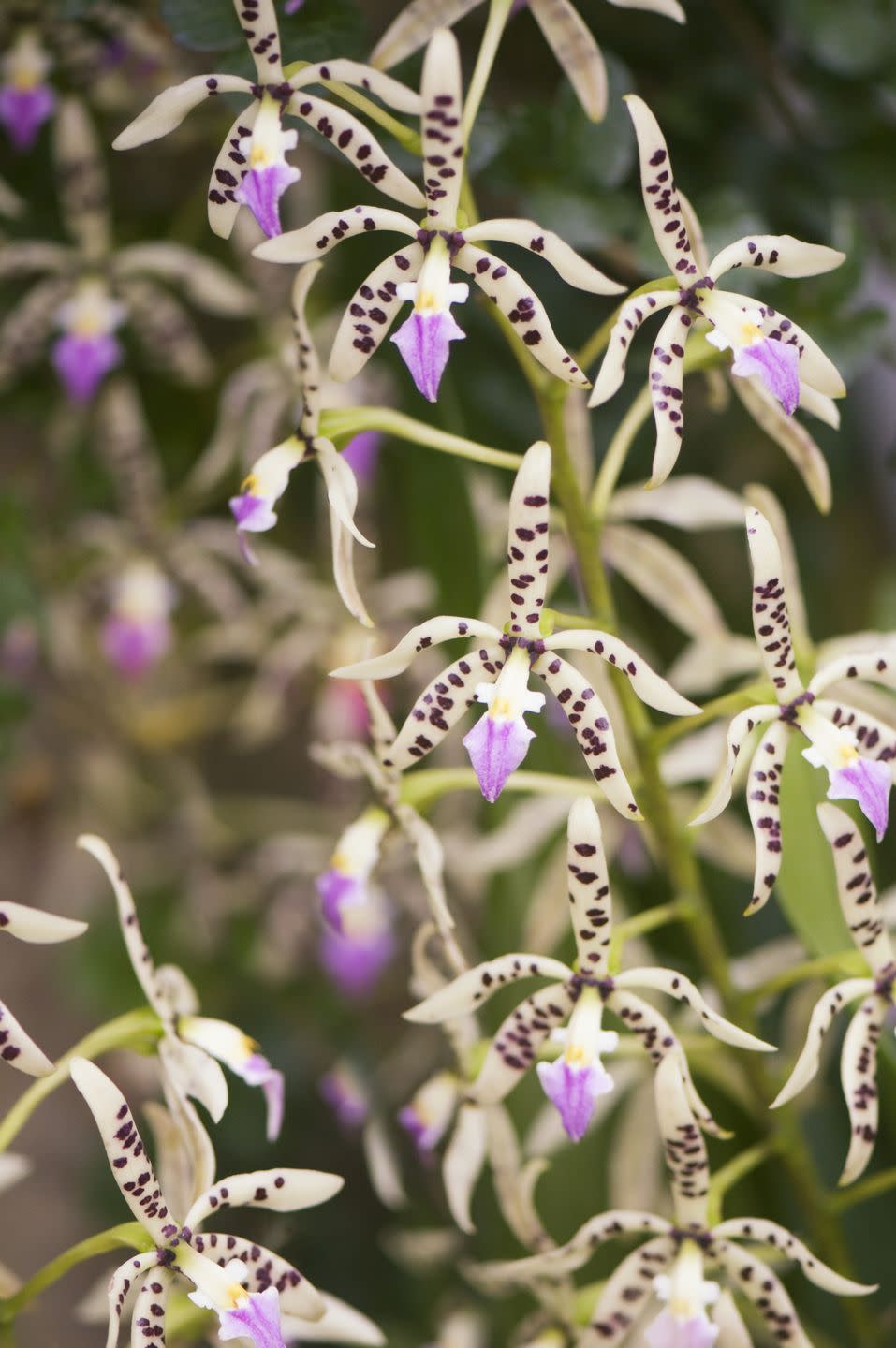
Oncidium Orchid
Oncidium orchids are commonly referred to as "dancing lady orchids" because of the skirt-like frill of their petals. There are more than 300 species in this genus, including the popular "sharry baby" variety that is said to smell like chocolate. Oncidium orchids need consistent moisture and humidity, prefer a cooler environment, and usually bloom in the fall.
Care Guide
Light: Semi-shaded, east or west-facing windows
Water: Keep moist, watering up to 2 to 3 times per week in dry, warm weather
Temperature: 70 to 85°F during the day, 60 to 65°F at night
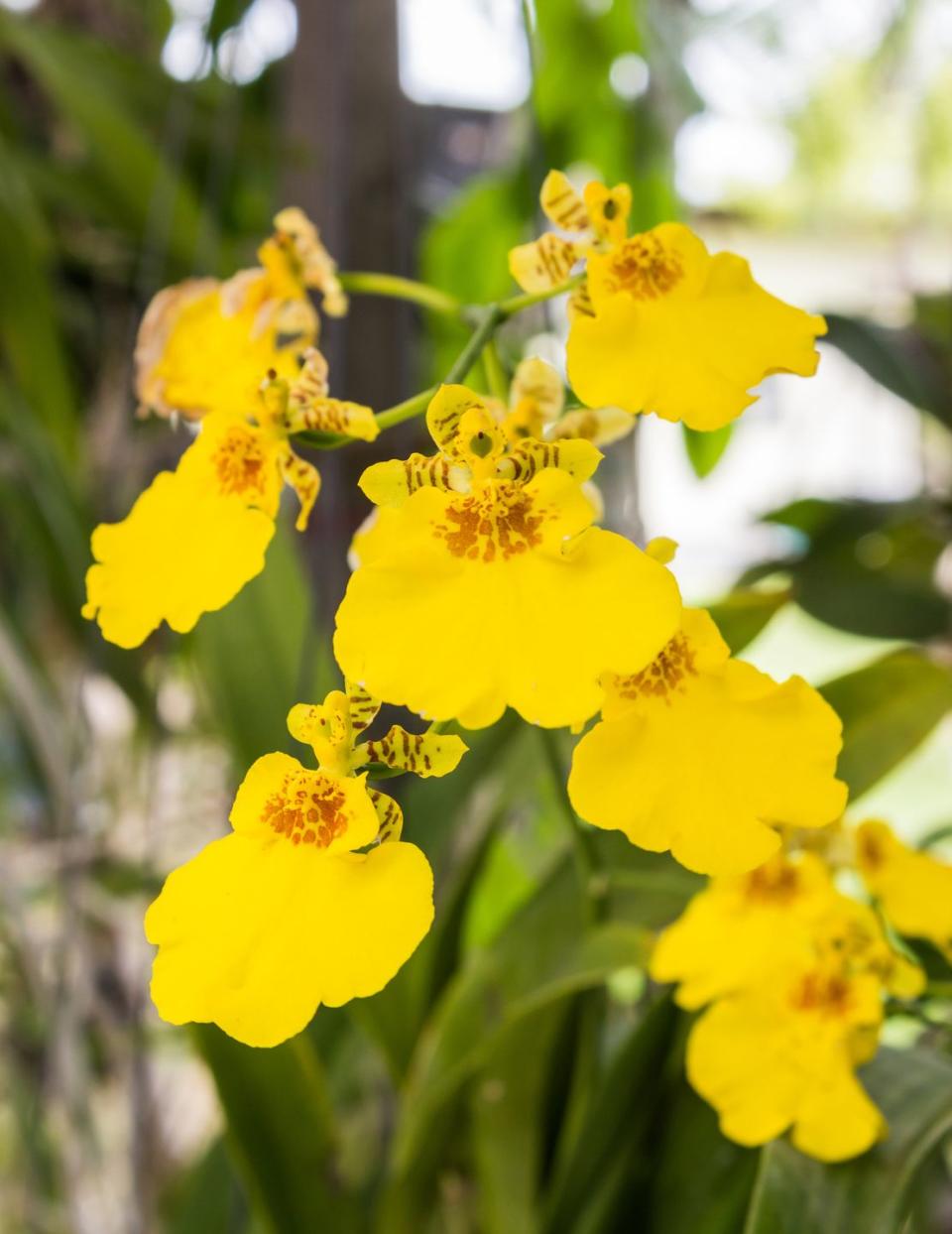
Epidendrum Orchid
With more than 1,000 different species and hybrids, epidendrum orchids are one of the most common types of orchids. Their flowers are more petite compared to other orchids and they usually bloom in bunches. Epidendrum orchids need very bright light and are best grown outdoors in the summer or with supplemental artificial lighting inside.
Care Guide
Light: Abundant diffuse light
Water: Allow roots to dry completely between watering. Water more often during hot weather.
Temperature: Can tolerate most temperatures above 50°F
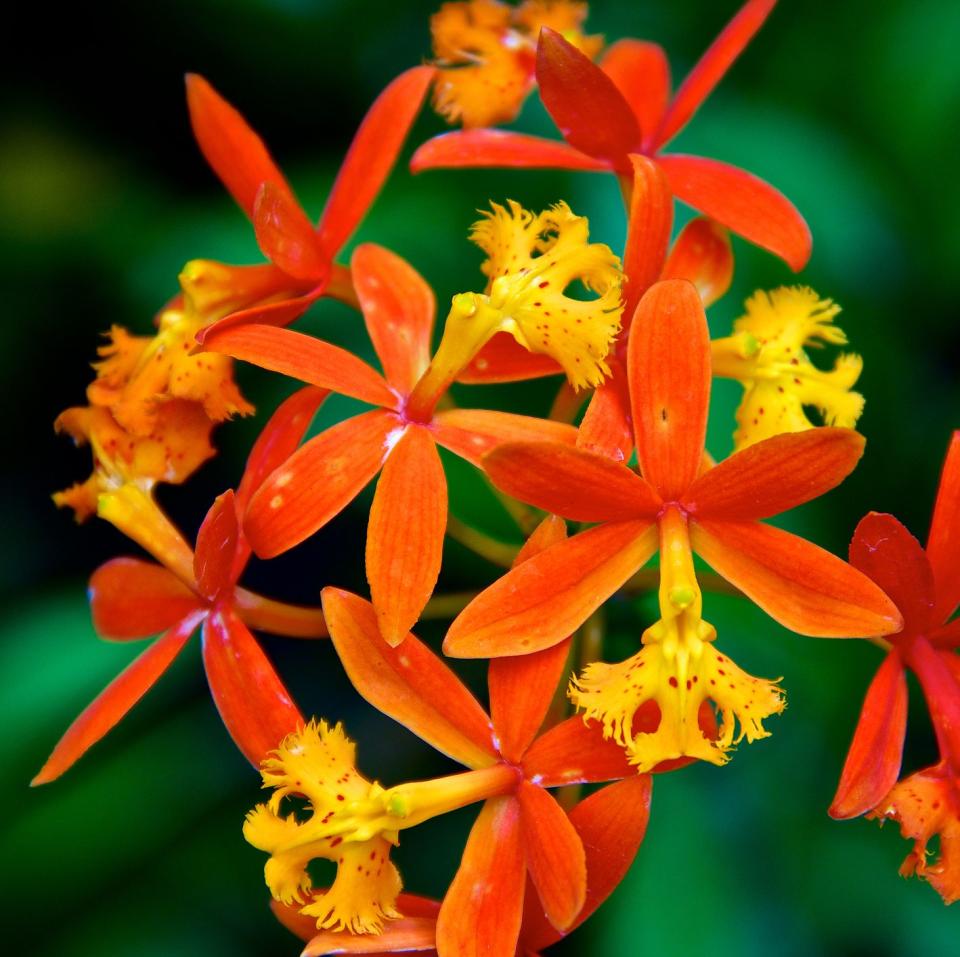
Odontoglossum Orchid
Odontoglossum orchids are cool-climate orchids known for their colorful and freckled petals. These flowers need moderate light and frequent watering (about 2 to 3 times per week). Odontoglossum orchids are highly recommended for growing in greenhouses.
Care Guide
Light: Bright shade, no direct light
Water: Keep well-watered in a high-humidity environment
Temperature: 70 to 75°F during the day, 50 to 55°F at night
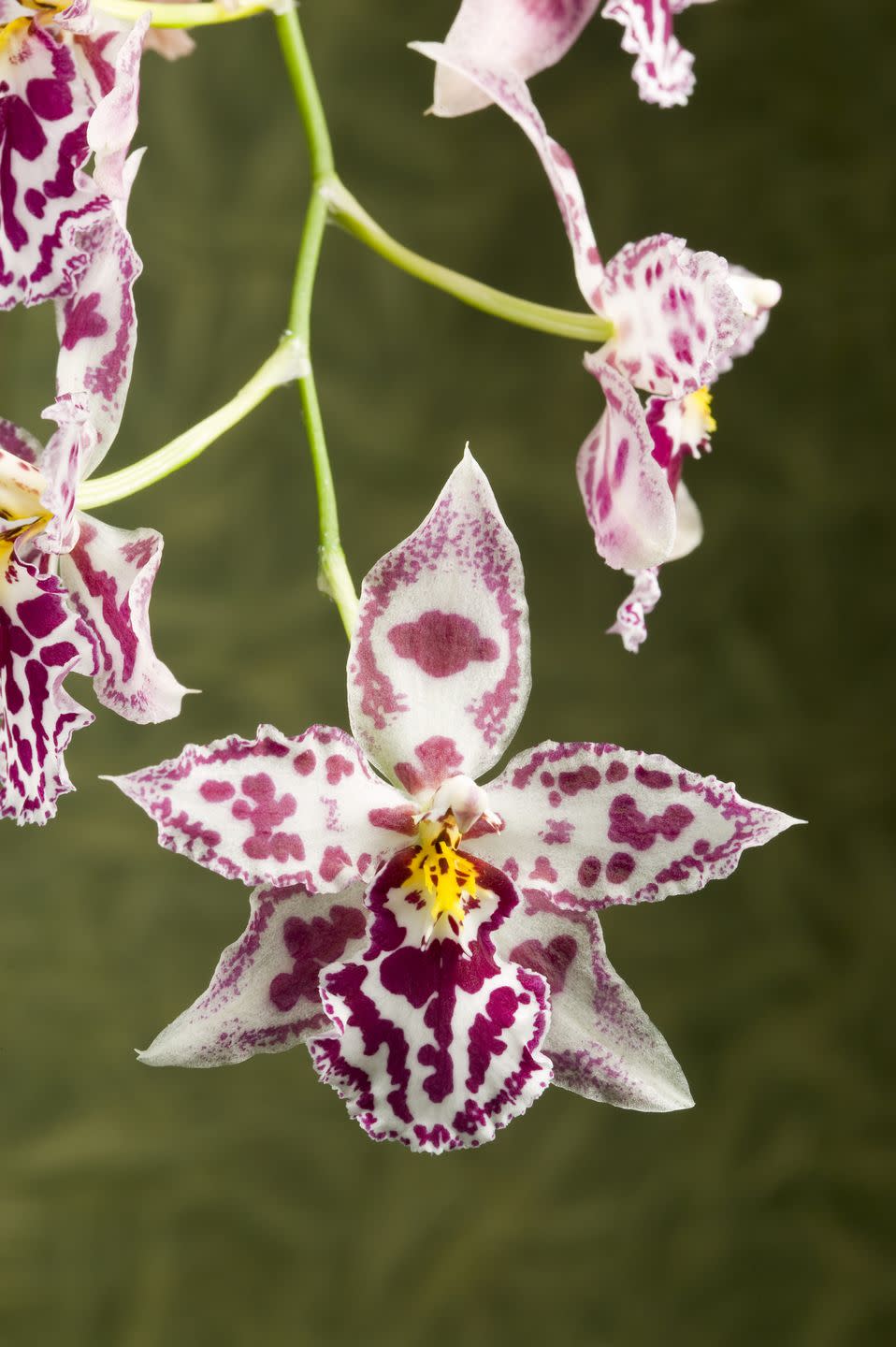
Paphiopedilum Orchid
The fused petals of paphiopedilum orchids create a pouch that looks a lot like a ballet flat, which is why this orchid is often referred to as the "lady's slipper orchid." This orchid is an easy-to-grow houseplant and is great for beginners, with petals in a variety of colors with speckled and striped patterns.
Care Guide
Light: Well shaded, indirect light, east or west-facing windows
Water: Keep moist, watering up to 2 times per week in dry, warmer months
Temperature: 70 to 80°F during the day, 55 to 65°F at night
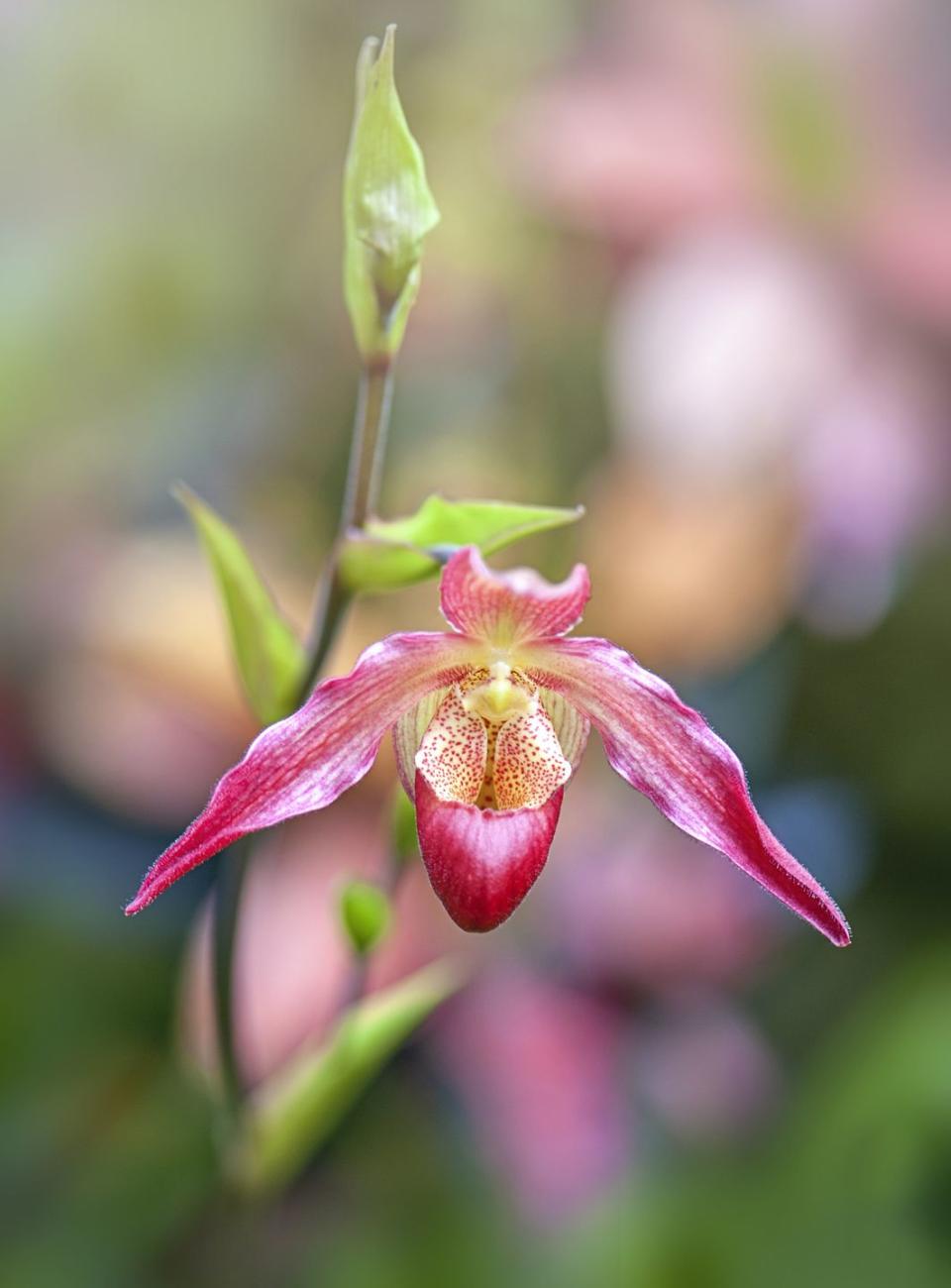
Phaius Orchid
Phaius orchids, also known as "nun's cap orchids," can grow up to 4 feet tall. They have large leaves at their base and flowers that come in colors like white, pink, red, and purple. Phaius orchids can grow outside year round (without freezing) and typically bloom in the winter.
Care Guide
Light: Moderate to bright filtered light, can tolerate some low light situations
Water: Keep moist, watering up to 2 times per week in dry, warmer months
Temperature: Above 60°F
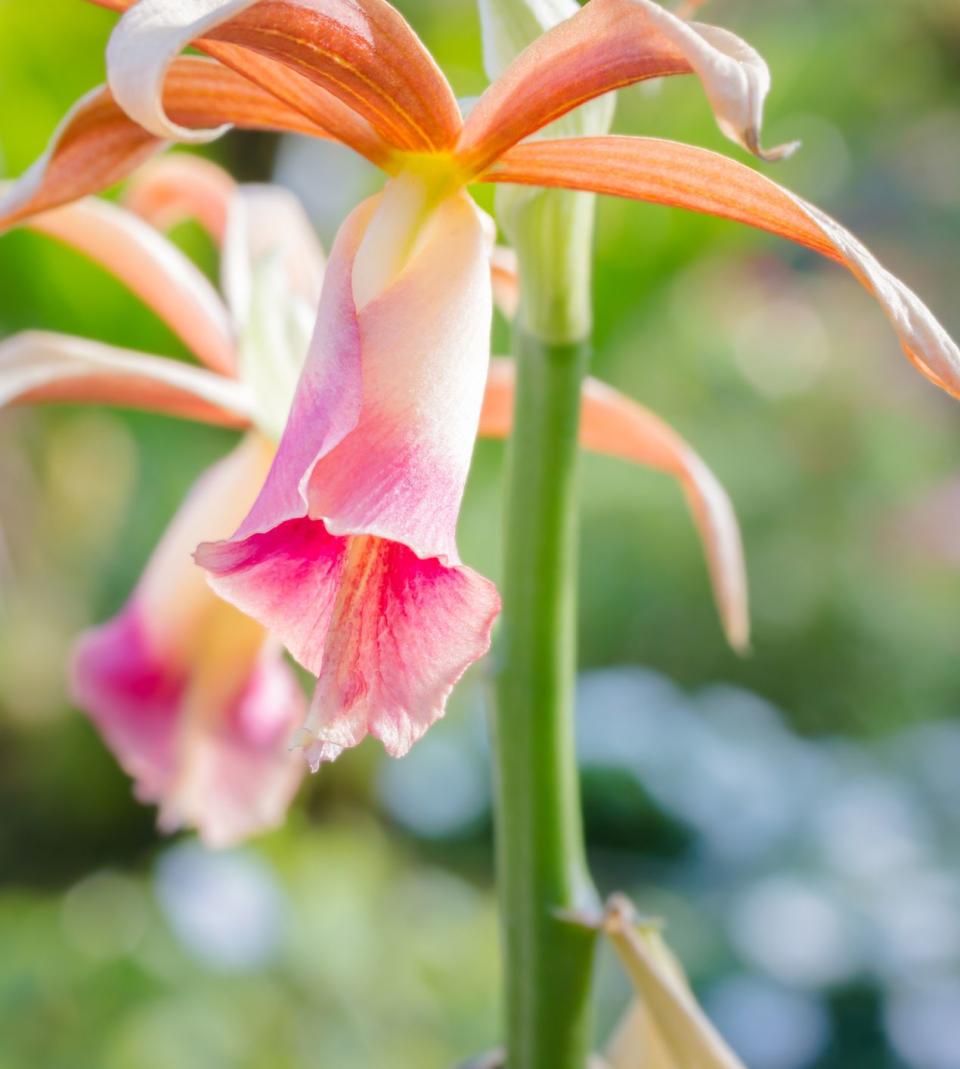
Phragmipedium Orchid
Unlike a vast majority of other types of orchids, phragmipedium orchids thrive in wet conditions and prefer to have "wet feet." This comes as no surprise since these orchids are commonly found on the sides of streams and rivers. Phragmipedium orchids look much like lady's slipper orchids with petals that form a pouch.
Care Guide
Light: semi-shade to bright, indirect light, east-facing windows
Water: Keep moist, watering up to 2 to 3 times per week, use clean water
Temperature: 70 to 80°F during the day, 55 to 65°F at night
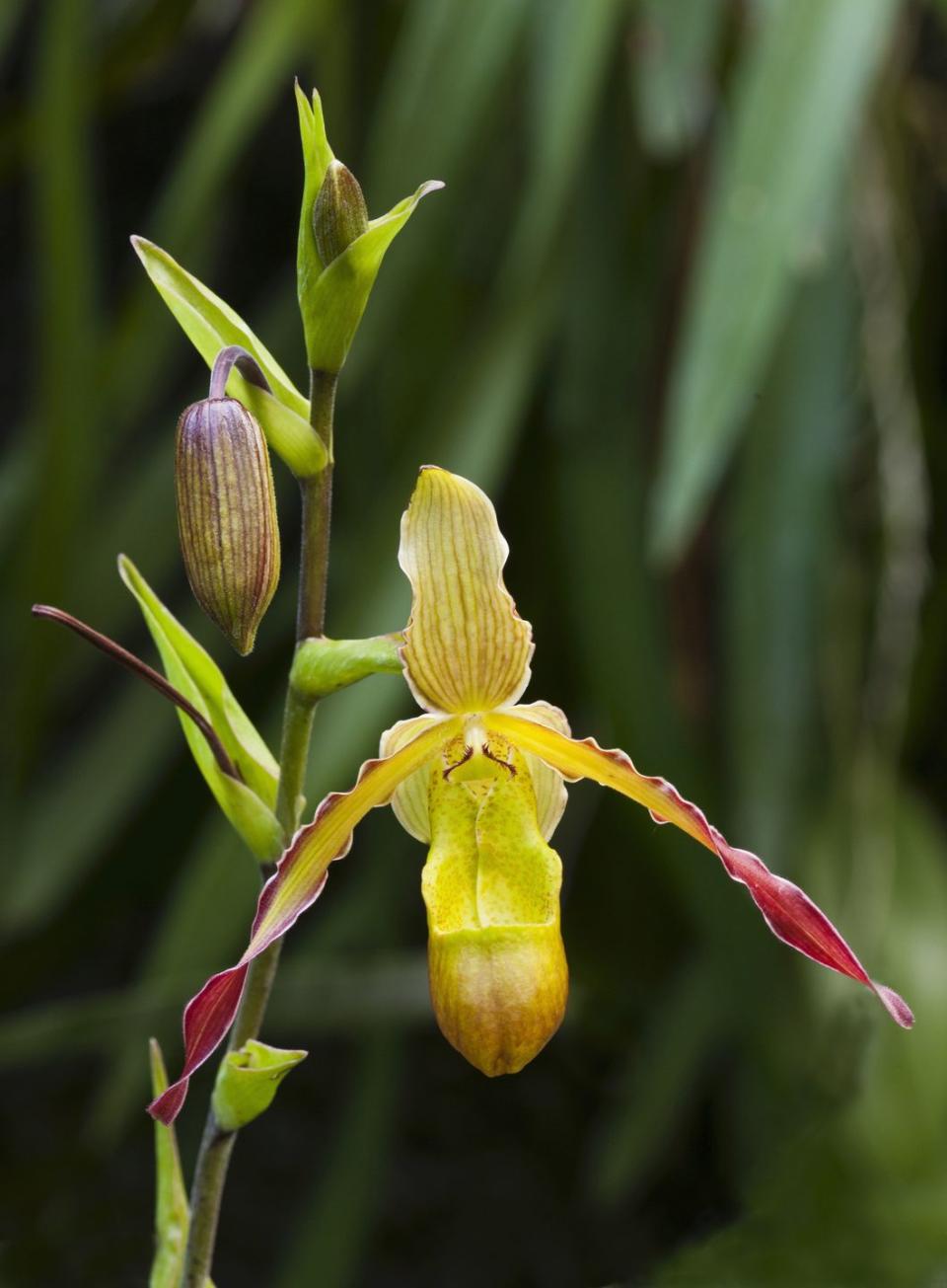
Catasetum Orchid
As one of the most unique orchids, catasetum orchids have unusually waxy flowers and produce both male and female flower buds. If the plant is touched or bumped, the male flowers will actually shoot pollen into the air.
Care Guide
Light: Bright shade to full sun, east-facing windows
Water: 2 to 3 times per week while bulbs are forming. Reduce watering after plants flower, then stop altogether when leaves fall off and plant goes dormant.
Temperature: 70 to 80°F during the day, 60 to 65°F at night
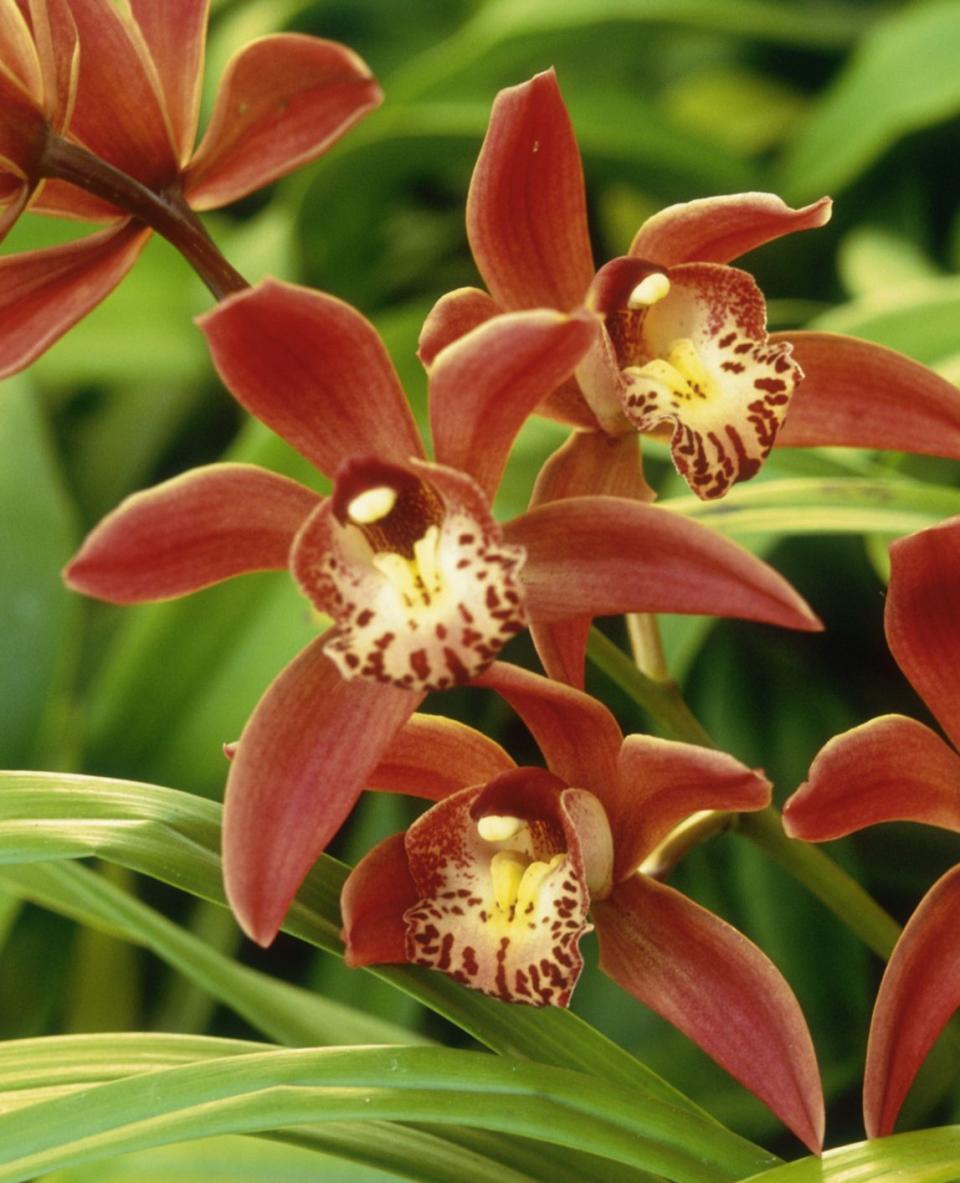
Lycaste Orchid
Many species of lycaste orchids are fragrant with scents like lemon and cinnamon. These orchids shed their leaves during dormancy revealing spikes that can be quite sharp. Lycaste orchids come in colors like white, yellow, and red, and bloom in late winter to early spring.
Care Guide
Light: Abundant, indirect light, east-facing windows
Water: Keep soil moist at all times during growing, reduce slightly in the winter
Temperature: 65 to 75°F during the day, 50 to 60°F at night
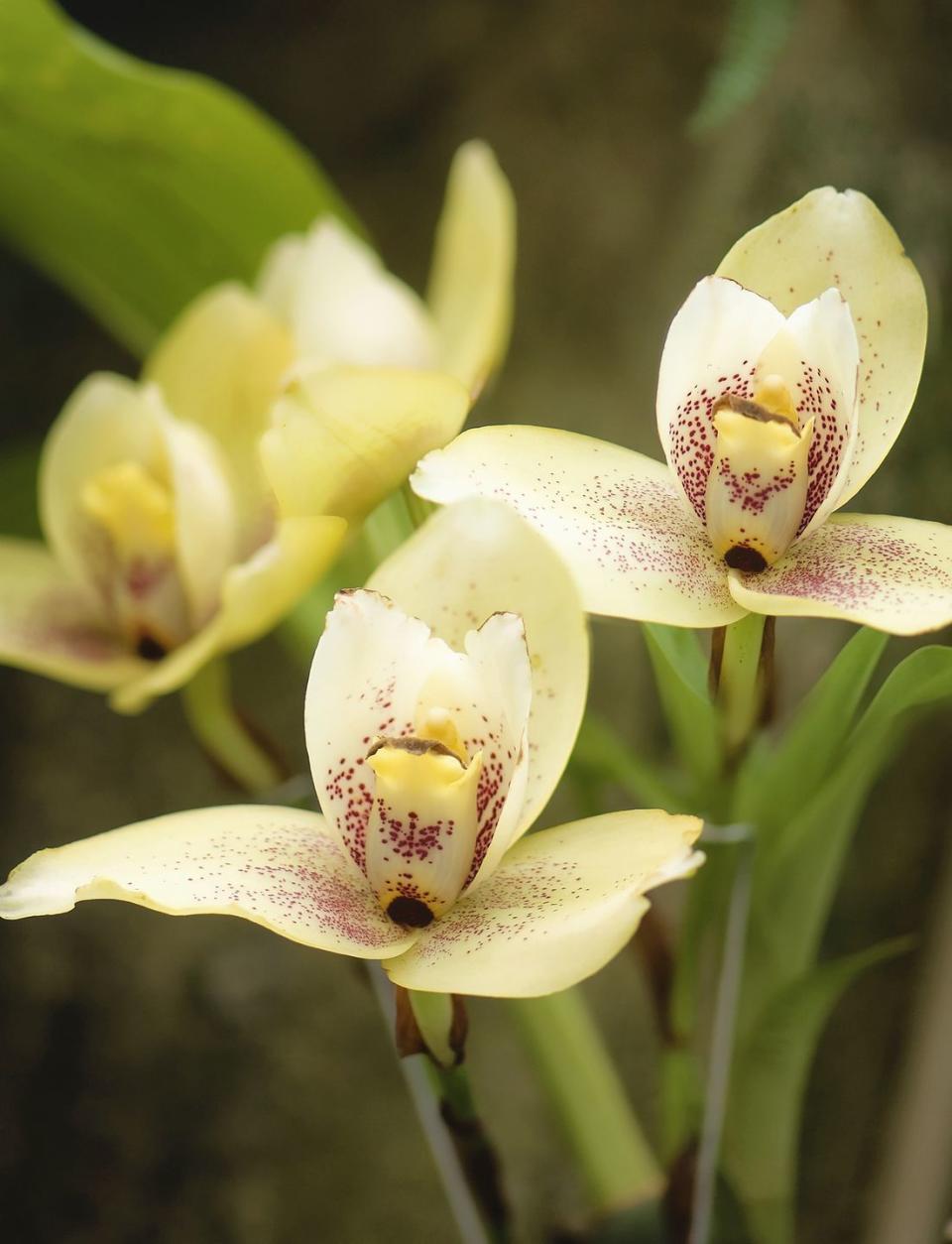
Ludisia Orchid
Also known as "jewel orchids," ludisia orchids make up a rare genus that only includes one species. These orchids have dark green leaves and small white flowers that bloom in the fall and winter. Ludisia orchids don't need a lot of sunlight and do well as indoor houseplants.
Care Guide
Light: Medium indirect light, east or west-facing windows
Water: Keep soil moist and keep plant in a high-humidity environment
Temperature: 65 to 75°F during the day, 60 to 65°F at night. Don't let it get below 50°F
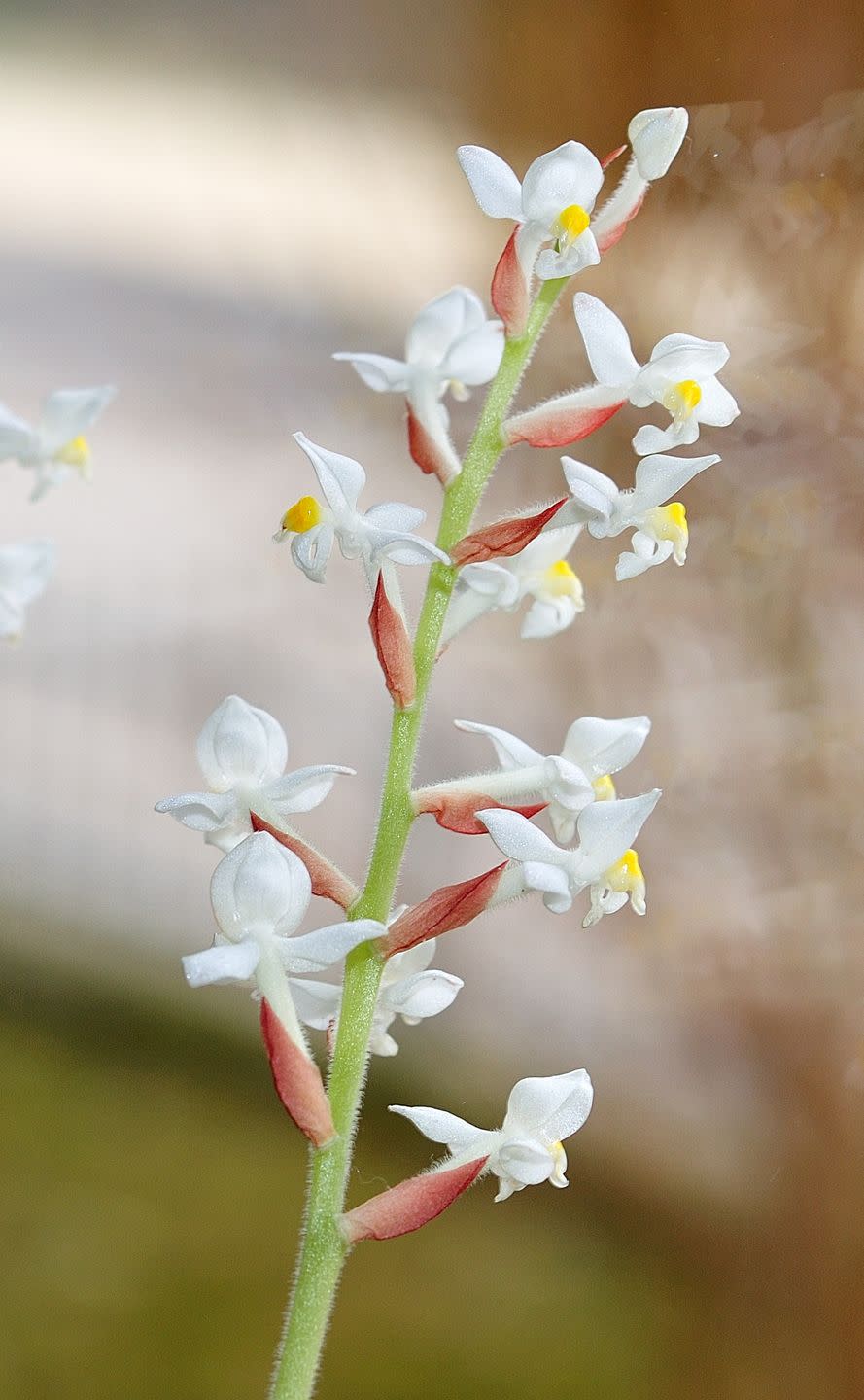
Vanilla Orchid
Vanilla, one of the most popular fragrances and spices, actually comes from a genus of orchids. Vanilla orchids are the only type of orchids that grow on vines and need a lot of vertical space. Individual flowers only last about a day, but the plant will continue to produce them for up to 1 to 2 months.
Care Guide
Light: Shade to bright, indirect light, east-facing windows
Water: Keep soil moist and keep plant in a high-humidity environment
Temperature: 80 to 95°F during the day, 60 to 70°F at night
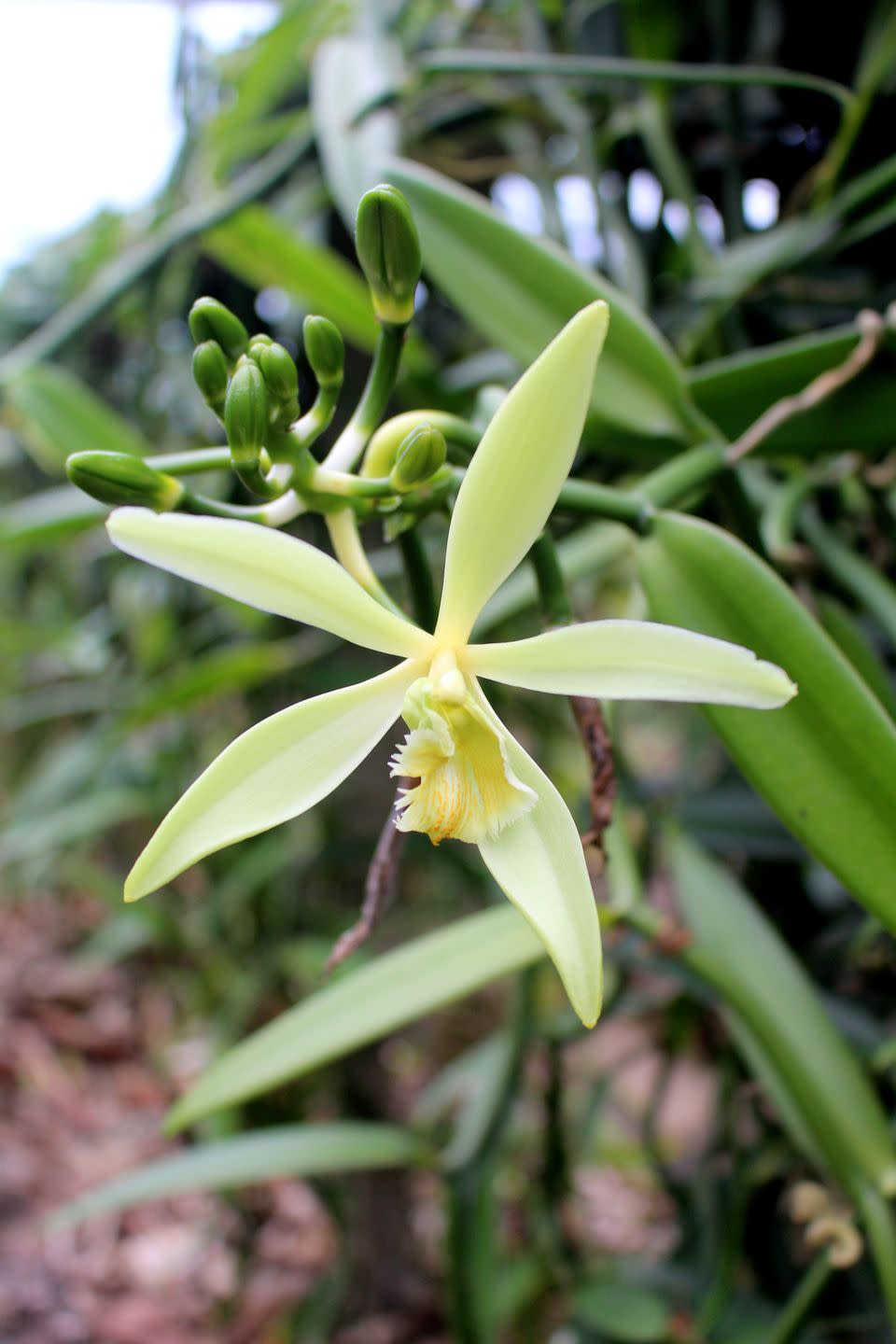
FAQs
What Is the Easiest Orchid to Grow?
Moth orchids are the easiest orchids to grow in the home. They bloom in winter, when you most need color, for months. Flowers are white, pink, purple, salmon or yellow, and some have speckles or splotches. They are also called phalaenopsis orchids.
What Is the Most Common House Orchid?
There are several readily available orchids you can grow. The most common types include moth orchids, cattleya orchids, dendrobium, oncidium, ludisia, and cymbidium orchids. These are all easy to grow indoors.
What Are The Most Difficult Orchids to Grow?
Habenerias are considered one of the most difficult orchids to grow, mainly because it's tricky to keep up with their watering needs. They require constant moisture while in flower but no water at all once the foliage starts dying. This orchid type typically isn't recommended for first-time orchid growers.
How Do I Know What Kind of Orchid I Have?
The orchid family is vast, so it's tough to narrow down the type if there's no tag or plant description when you purchase it. Orchid flowers come in many different colors, and if it's not in flower, it's even more difficult to tell what you have. If you're serious about orchids, the American Orchid Society has a subscription database that allows you to identify your plant through photos and descriptions.

You Might Also Like


